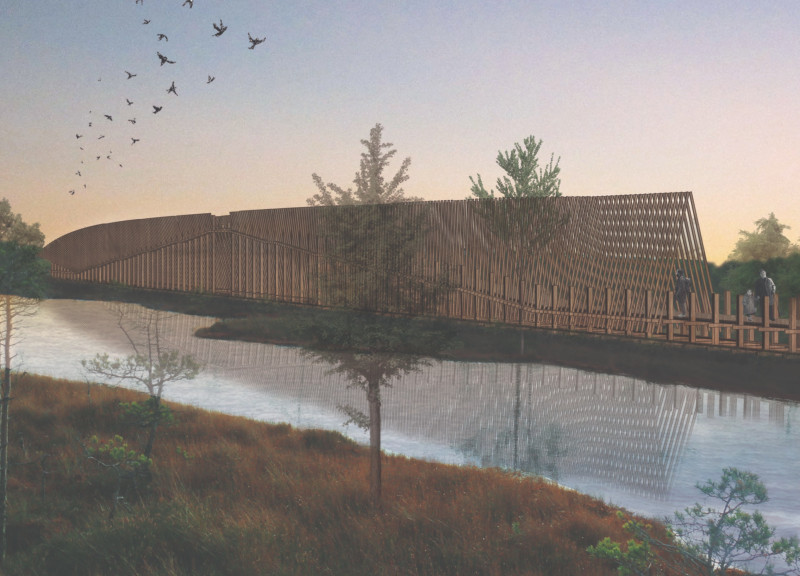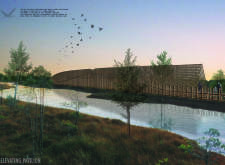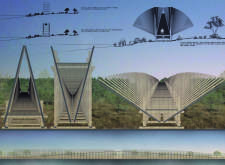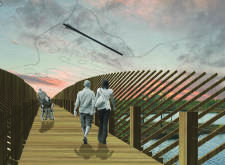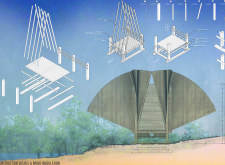5 key facts about this project
The design draws inspiration from the black stork, an endangered bird that thrives in Kemeri National Park. Located in a wetland, the pavilion serves as a space for observation and connection with the natural environment. The main idea behind the design is movement, echoing the grace of the stork in flight while enhancing visitors' experiences in nature.
Conceptual Framework
The pavilion emphasizes the act of climbing, guiding visitors up a linear path that encourages them to engage with the landscape. This winding pathway does not have a clear start or finish, inviting exploration. At the top, an extended platform offers wide views, deepening one’s appreciation for the wetland ecosystem that surrounds it.
Spatial Dynamics
As people ascend, the pavilion's exposed linear elements change direction. This shifting form reflects the black stork's graceful flight. The design allows flexibility, aligning the structure with the landscape. Each perspective invites a new experience, encouraging individuals to explore further and develop a connection to their surroundings.
Material Selection
The materials chosen for construction enhance the building’s relationship with nature. Wood slats measuring 4" x 2" and wooden decks of 6" x 2" create a warm aesthetic. Twelve-inch pillars and beams provide the necessary support. The materials selected link the pavilion to its environment, offering both durability and compatibility with the landscape.
Crafted Experience
Every aspect of the pavilion is designed to resonate with the essence of the black stork. The climbing pathway and structural elements not only enhance visitor interaction but also create a lasting bond with the wetland area. The form of the pavilion gracefully contrasts the natural backdrop of Kemeri National Park, inviting introspection and appreciation of the environment.


